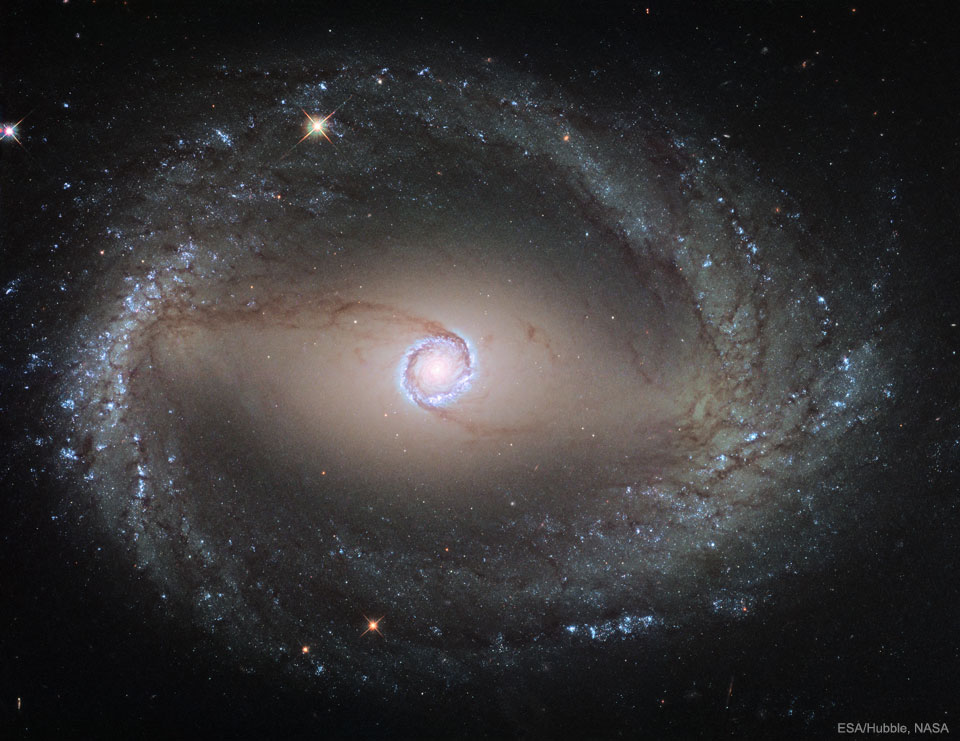2022年5月8日
Spiral Galaxy NGC 1512: The Inner Rings
Image Credit: NASA, ESA, Hubble Space Telescope
Explanation: Most galaxies don’t have any rings — why does this galaxy have two? To begin, the bright band near NGC 1512’s center is a nuclear ring, a ring that surrounds the galaxy center and glows brightly with recently formed stars. Most stars and accompanying gas and dust, however, orbit the galactic center in a ring much further out — here seen near the image edge. This ring is called, counter-intuitively, the inner ring. If you look closely, you will see this the inner ring connects ends of a diffuse central bar that runs horizontally across the galaxy. These ring structures are thought to be caused by NGC 1512’s own asymmetries in a drawn-out process called secular evolution. The gravity of these galaxy asymmetries, including the bar of stars, cause gas and dust to fall from the inner ring to the nuclear ring, enhancing this ring’s rate of star formation. Some spiral galaxies also have a third ring — an outer ring that circles the galaxy even further out.
Tomorrow’s picture: martian eclipse
螺旋星系NGC 1512的内环
影像提供: NASA, ESA, Hubble Space Telescope
说明: 大部分的星系没有环结构,然而,为何这个星系有二个环呢?首先,NGC 1512中心的亮带是核心环,一道由新诞生的恒星所聚成、环拱在星系中心周围的亮环。不过,影像中大部分的恒星和相伴的气体和尘埃,都在靠近影像边缘的环上,并绕着星系的中心运行;而与直觉相违的是,这道环却称为是内环。如果仔细检视,就会发见现内环与水平横贯星系的弥漫中心棒之二端相连。这些环结构,可能是NGC 1512在一种称为拉伸的长期演化过程中,因为本身的不对称性所造成的。这种星系的不对称结构和它们恒星棒的产生的重力,会造成气体和尘埃从内环掉向核心环,提高核心环的恒星形成率。有些螺旋星系甚还有第三个环,而这个外环在更外围之处环拱着整个星系。
明日的图片: martian eclipse



